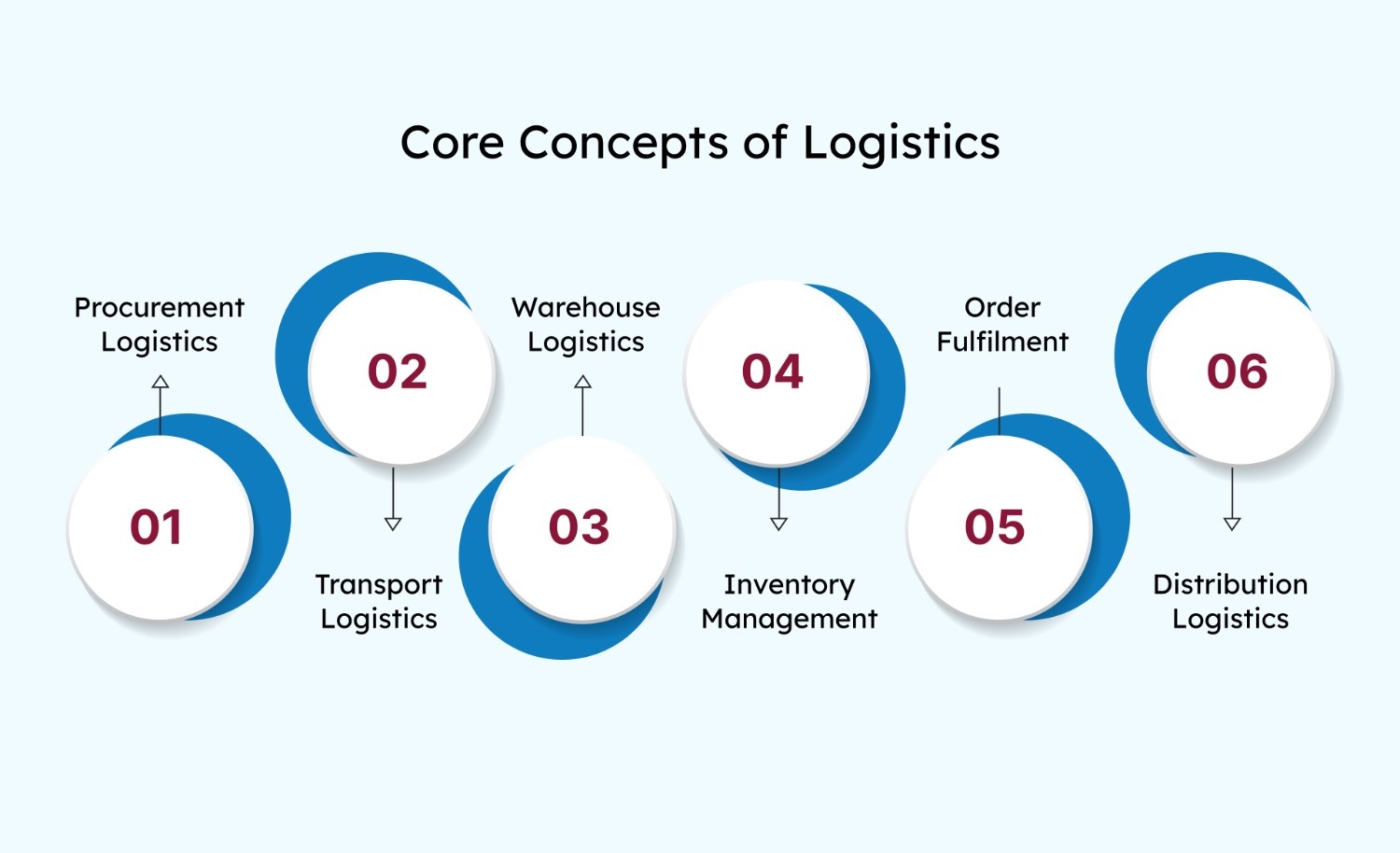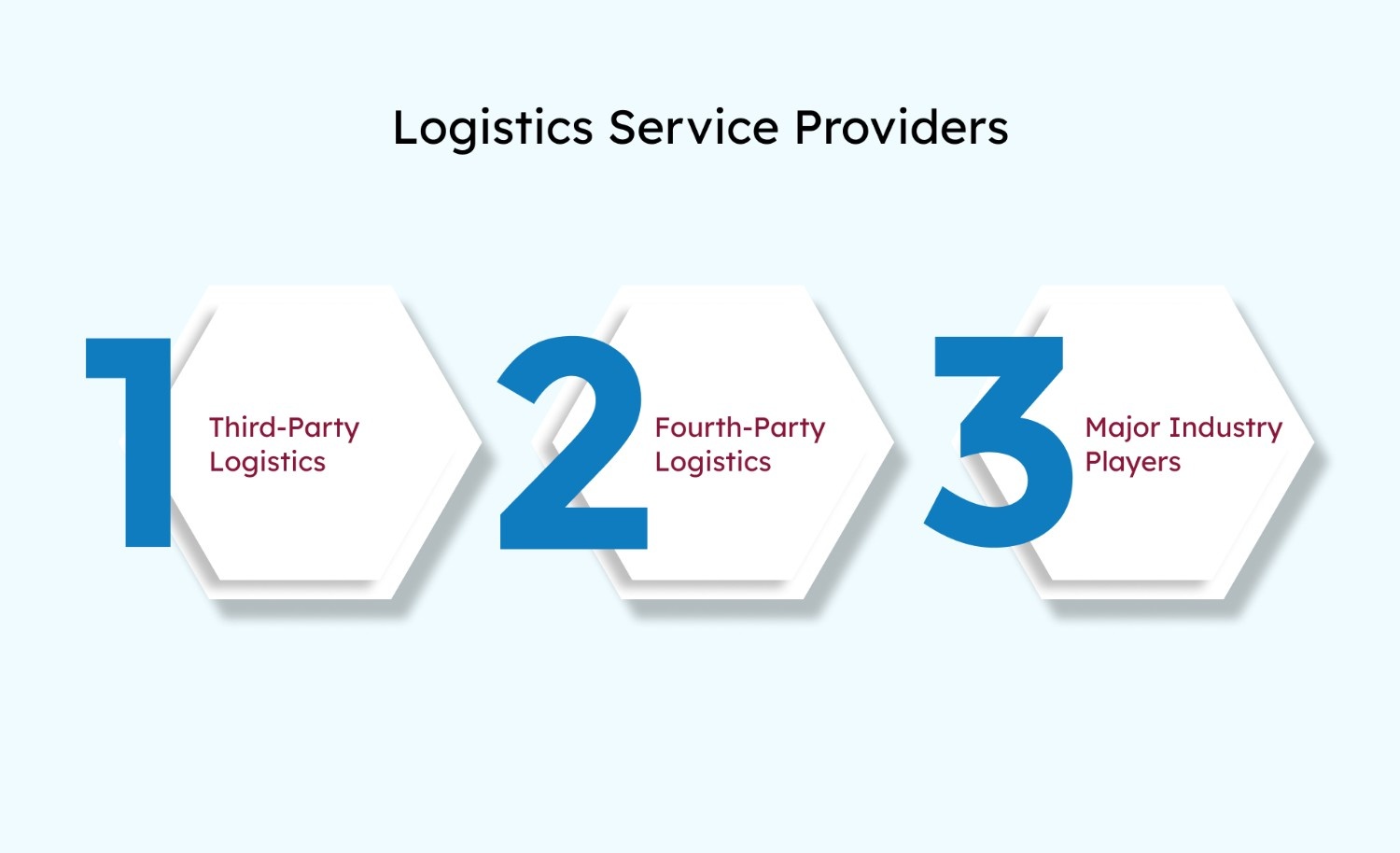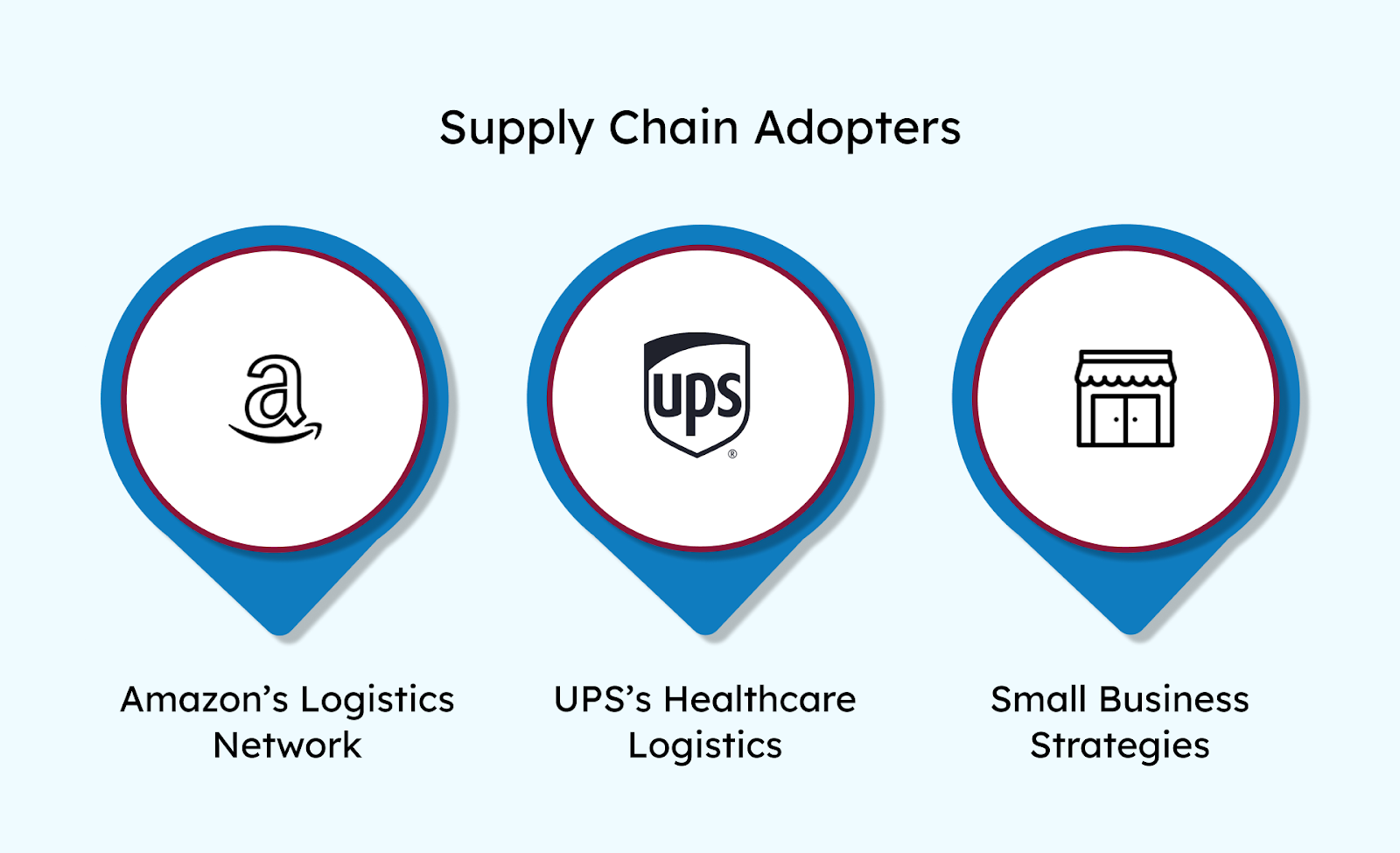Logistics is at the heart of modern commerce, ensuring goods move efficiently from factories and warehouses to consumers across diverse markets. It involves much more than transportation, managing a complex network of processes that keep supply chains running smoothly.
Across the GCC, the logistics sector is experiencing immense growth, driven by expanding e-commerce, major infrastructure investments, and the region’s role as a global trade hub.
This growth reflects an increasing demand for integrated and innovative supply chain solutions. Businesses are adapting to meet the evolving needs of the market and the expectations of their customers.
In this article, we’ll explore what logistics means, why it matters to businesses, and how it shapes industries today. Regardless of your business size, mastering logistics enables informed decision-making, optimised operations, and ensures customer satisfaction.
What is Logistics?
Logistics is the process of moving goods, services, and information from their origin to their destination. It covers everything from storing raw materials to delivering the final product to customers. In e-commerce, for example, logistics encompasses picking, packing, shipping, and tracking orders, all the way up to doorstep delivery.
Why Does Logistics Matter in Business?
Logistics plays a critical role in how businesses operate and compete. It helps:
- Deliver products on time, meeting customer demands
- Cut costs by streamlining storage, transport, and labour
- Build trust through reliable and visible service
- Align supply chain partners for smoother operations
Logistics originated as a military strategy for managing supplies and troop movements. Today, it supports global trade by managing complex routes, handling customs regulations, and meeting tight delivery schedules. As customer expectations grow, logistics isn’t just support; it’s a strategic function that drives performance.
As logistics continues to grow in importance, understanding its core concepts becomes vital for businesses striving to maintain a competitive edge.
Core Concepts of Logistics

Logistics isn't just trucks and warehouses; it’s the invisible engine that keeps businesses moving. Think of it as a network of roles that quietly (and quickly) get things from point A to B, without letting things fall through the cracks.
Here’s what that looks like in action:
1. Procurement Logistics
Every supply chain starts with sourcing, the process of securing the right materials at the right time from reliable suppliers. While it may not always be in the spotlight, it’s a critical step; delays here can disrupt the entire chain. The most effective procurement teams don’t simply react to demands; they plan, negotiate strategically, and monitor market changes to stay ahead of the competition.
2. Transport Logistics
Once something’s made, it has to move. Transport logistics figure out how.
Is it faster (but costlier) to send it by air? Can it go by sea to save money, even if it takes longer? These aren’t academic questions; they directly impact profit margins and delivery promises. A missed shipment or damaged goods aren’t just annoyances; they’re brand killers.
3. Warehouse Logistics
Warehouses used to be storage dumps. Now they’re efficiency machines.
A well-run warehouse doesn’t just keep things safe; it streamlines order processing, minimises handling errors, and expedites product delivery. Things like barcode systems, zone picking, or even just smart shelf layouts can shave minutes (and money) off every order.
If you’re managing fluctuating inventory or just need temporary space without the hassle of fixed contracts, WareOne offers a more flexible way to store. No paperwork overload. No rigid terms. Just pay for what you need, when you need it. Want to keep storage off your worry list? Book a space with WareOne.
4. Inventory Management
This is where finance and operations collide. Too much stock? You’re bleeding cash and shelf space. Too little? You’re losing sales. Effective inventory management isn’t about guesswork; it’s about data, forecasting, and visibility. And when done right, it becomes a quiet superpower for a business.
5. Order Fulfilment
This is what customers experience. They don’t see your warehouse or transport deals. They see whether their order arrived on time and in proper condition. Fulfilment logistics ties together every link before it, including picking accuracy, packaging quality, and shipping timelines. Mess this up, and customers remember. Do it right, and they don’t notice, because it just works.
6. Distribution Logistics
This is the handoff process, which involves transferring goods from your facility to your customer or retailer. But it’s not just about delivery vans. It's about selecting the right drop-off points, managing returns efficiently, and adapting to seasonal fluctuations and demand spikes. Distribution is where flexibility matters. A rigid system breaks under pressure; a responsive one scales.
Need chilled cargo, retail drops, or last-mile delivery without paying for a full truck? WareOne lets you book space based on volume, not the whole vehicle. Fast, flexible, and priced to move.
Each area of logistics might seem separate, but they’re deeply connected. A delay in procurement throws off fulfilment. Poor inventory data slows down shipping. It's a chain, and when one link slips, the whole system suffers the consequences.
Logistics encompasses a range of processes, with forward and reverse logistics being key components that shape the flow of goods and services.
Forward vs. Reverse Logistics
Logistics isn’t just about delivering products to customers; it also involves managing returns and other backwards flows in the supply chain. The table below highlights the key differences between forward and reverse logistics.
Forward logistics primarily focuses on efficiently moving goods through the supply chain to meet customer demand. Meanwhile, reverse logistics deals with the return journey, which is increasingly important in today’s market for handling returns, reducing waste, and supporting sustainability initiatives.
Make Logistics Work for You with WareOne’s Flexible Solutions
Handling both forward and reverse logistics doesn't have to be a headache. WareOne offers dynamic warehousing options and efficient transportation services tailored to your needs. Whether handling returns or fulfilling customer orders, our platform enables easy scaling and adaptation.
Get started now with WareOne and experience simple, reliable logistics, all in one place.
Inbound vs. Outbound Logistics
Logistics is also divided into inbound and outbound activities, each of which is imperative to maintaining production flow and customer service.
Inbound logistics ensures materials arrive on time and meet quality checks to keep production running smoothly. Outbound logistics ensures that finished products are delivered to customers quickly and accurately.
Getting these right helps businesses run logistics that control costs, move fast, and deliver what customers expect, helping them stay competitive.
These distinctions between forward and reverse logistics directly impact the tangible benefits that effective logistics can deliver to businesses.
Tangible Benefits of Effective Logistics
A powerful logistics strategy delivers measurable gains beyond basic cost savings or operational expansion. Here’s a direct look at the most valuable advantages, based on current industry research and regional market trends:
1. Greater Operational Efficiency
Modern logistics solutions, especially those integrating automation and AI, allow businesses to optimise routes, automate warehouses, and reduce manual intervention. This results in faster processing times, fewer errors, and the ability to handle higher volumes without requiring additional headcount.
2. Real-Time Visibility and Control
Advanced logistics management systems provide real-time tracking of shipments, inventory, and fleet status. This transparency lets managers respond quickly to disruptions, monitor performance, and make informed decisions that keep goods moving smoothly.
3. Enhanced Risk Management
Predictive analytics and performance monitoring tools help logistics teams anticipate and mitigate risks, such as supply chain disruptions or equipment failures. Early detection of issues minimises downtime and prevents costly delays. This proactive approach is especially vital in regions with complex international trade, and regulatory complexity can introduce unexpected challenges.
4. Improved Customer Experience
Accurate, on-time deliveries and clear order updates help build customer trust. For instance, a global e-commerce platform like Amazon utilises real-time tracking and automated notifications to keep customers informed, resulting in higher satisfaction and repeat business. Fast, reliable service is now expected, especially in e-commerce.
5. Sustainability and Compliance
Eco-friendly logistics practices, including the use of electric vehicles, green warehouses, and carbon tracking, are becoming standard across the GCC. Companies are investing in these solutions to meet environmental goals and appeal to eco-conscious customers. Adhering to international standards not only supports sustainability but also reduces the risk of regulatory penalties.
6. Competitive Differentiation
Companies that invest in cutting-edge logistics gain a distinct competitive advantage. Features like blockchain-enabled transparency, last-mile delivery innovations, and seamless customs clearance set businesses apart in crowded markets. For importers and exporters across the GCC, efficient customs clearance is critical to avoiding delays and reducing costs.
Need help with documentation and border approvals? WareOne’s integrated customs clearance services handle documentation, compliance, and regulatory requirements, ensuring your shipments move swiftly and securely through every border checkpoint. Get in touch with us today!
Next, let’s understand the instrumental role of service providers in delivering these benefits at scale.
Logistics Service Providers

Choosing the right logistics service provider impacts a business's ability to efficiently move goods, manage inventory, and effectively respond to customer needs. The role and importance of logistics become evident when examining how these providers' evolving capabilities impact global supply chains.
Here’s a direct overview of the main categories and their impact:
1. Third-Party Logistics (3PL)
Third-party logistics providers handle outsourced logistics, including transportation, warehousing, and order fulfilment. The global 3PL market is projected to reach USD 1.15 trillion in 2025, driven by the rapid growth of e-commerce and industrial sectors.
These providers invest in advanced technologies, such as IoT, AI, and automated warehousing, to support complex supply chains and offer value-added services, including inventory management, reverse logistics, and last-mile delivery.
2. Fourth-Party Logistics (4PL)
4PL providers act as integrators, managing and coordinating multiple 3PLs and other supply chain partners. They design, implement, and oversee the logistics process, often using advanced analytics and real-time data to optimise performance across all channels.
This model is especially valuable for companies with global operations or those seeking a single point of accountability for their supply chain. 4PLs help businesses focus on core activities by taking charge of the logistics ecosystem, from consulting and system design to execution and continuous improvement.
3. Major Industry Players
Leading firms in the logistics sector of the GCC utilise digital technologies and international networks to dominate the market. These companies are recognised for their agility, ability to adapt to changing customer expectations, and investment in workforce development.
Their services include container shipping, express delivery, supply chain consulting, and specialised healthcare and cold chain logistics solutions.
Here are a few leading trends among logistics service providers in the GCC:
- Heavy investment in automation, robotics, and AI to improve warehouse and transport efficiency.
- Expansion of value-added services, especially for e-commerce, such as packaging and last-mile delivery.
- Emphasis on sustainability, with eco-friendly transport and green warehousing aligning with regional environmental goals.
- Strategic partnerships and acquisitions to broaden service offerings and strengthen market position.
As logistics providers grow, technology plays a larger role in making supply chains faster, clearer, and more reliable. Let’s take a closer look at how technology is changing logistics today.
Role of Technology in Modern Logistics
Technology now shapes every stage of logistics, making operations more accurate, faster, and easier to manage. The value of digital tools becomes clear in how they address real business challenges.
Here’s a practical overview of the main technological tools and their impact:
1. Logistics Management Software (LMS)
LMS platforms provide businesses with a central system to plan, track, and manage goods from the warehouse to the customer. These systems reduce errors, automate tasks, and provide real-time updates on inventory and shipments.
2. Transportation Management Systems (TMS)
TMS software enables businesses to select the most optimal shipping routes and carriers. With features such as automatic load planning, real-time tracking, and freight auditing, companies can reduce transportation costs and address delivery issues promptly.
3. Warehouse Management Systems (WMS)
WMS platforms manage inventory, picking, packing, and storage in warehouses. Automation reduces errors, speeds up order processing, and maintains accurate stock levels.
4. Emerging Technologies: AI, IoT, and Blockchain
AI predicts demand and optimises routes, while IoT enables real-time tracking of goods and vehicles, providing instant location and condition updates. Blockchain ensures secure, tamper-proof transaction records, ideal for cross-border shipments and compliance.
These technologies are being rapidly adopted to enhance transparency and reliability in logistics.
Make Logistics Flexible and Efficient with WareOne
Managing logistics shouldn’t require long-term contracts or hefty investments. With WareOne, flexibility is built into every part of your supply chain. We offer on-demand warehousing and transportation services, allowing you to pay only for the space and services you need for a few days or several months at a time.
Our platform offers a seamless experience with real-time tracking, transparent pricing, and AI-powered tools that help optimise your logistics operations.
- Short-Term Flexibility: Need space or transport for a few days? WareOne adjusts to your business needs with no long-term commitments.
- Real-Time Tracking: Stay in complete control with our all-in-one dashboard, which provides visibility over inventory, shipments, and returns.
- E-commerce Ready: Tailored for online stores, D2C brands, and entrepreneurs, WareOne offers professional logistics solutions without the need for expensive infrastructure.
- Dynamic Pricing: Our AI-driven pricing adjusts in real-time, ensuring you always get the best rates based on market conditions.
With WareOne, small businesses no longer need to manage logistics in-house. Our platform offers the flexibility, visibility, and cost efficiency you need to scale and succeed.
Start today and discover how easy logistics can be with WareOne!
Real-World Examples and Case Studies

Technology now sits at the centre of modern logistics, reshaping how companies manage inventory, process orders, and deliver goods. The impact of digital tools is most visible in the way they have replaced manual processes, reduced errors, and improved speed at every stage.
The effectiveness of these technologies is best illustrated by the practical successes of companies that have integrated them into their supply chains.
1. Amazon’s Logistics Network
- Global Benchmark for Technology Integration: Amazon operates hundreds of fulfilment centres worldwide, each equipped with robotics for picking and sorting, conveyor systems for rapid movement, and AI-powered software for demand forecasting.
- Real-Time Tracking: Every order placed on Amazon is tracked from receipt to delivery, with real-time updates sent to the customer. During high-demand periods, such as Prime Day, Amazon’s systems automatically adjust staffing, inventory allocation, and delivery routes to handle millions of orders without bottlenecks.
- Predictive Analytics: Their use of predictive analytics ensures that warehouses are stocked with the right products based on local demand, reducing delivery times and costs.
2. UPS’s Healthcare Logistics
- Tailored Logistics Network for the Medical Sector: UPS Healthcare uses temperature-controlled packaging, IoT-enabled sensors, and dedicated healthcare distribution centres to ensure vaccines, medicines, and medical devices arrive safely and on time.
- Critical Role in Vaccine Distribution: During the COVID-19 pandemic, UPS played a crucial role in distributing vaccines globally, using real-time tracking to monitor temperature and location at every stage.
- Partnership with Medvantx: Their partnership with Medvantx, an online pharmacy, demonstrates how logistics technology enhances patient care by ensuring that prescriptions are filled and delivered promptly, even during periods of high demand or supply chain disruptions.
3. Small Business Strategies
- Technology Adoption for Competitiveness: Small and medium-sized businesses are increasingly adopting technology to compete with larger players. A regional retailer might use a cloud-based LMS to synchronise inventory across multiple stores and online platforms.
- Automation and Real-Time Updates: Orders placed online are automatically routed to the nearest warehouse for fulfilment, and customers receive real-time updates on delivery status. By integrating with local courier services, the retailer can offer same-day delivery in urban areas, matching the convenience of larger e-commerce platforms.
- Improved Customer Service: These solutions enable small businesses to manage seasonal spikes, minimise errors, and deliver a level of service that fosters customer loyalty.
These examples demonstrate that technology has become the foundation of effective logistics, enabling businesses of all sizes to deliver better customer outcomes and stay ahead in a competitive market.
Final Thoughts
As businesses face rising expectations and rapid market shifts, the ability to adapt through efficient logistics becomes a key differentiator. Today, advancements like AI-driven route optimisation, robotics in warehousing, and blockchain for secure transactions are transforming how companies operate.
At the same time, sustainability is becoming a core priority, with more organisations adopting greener practices to meet evolving standards.
To truly excel, businesses need logistics strategies that not only keep pace with these trends but also support growth and resilience. This is where tailored solutions make a difference, helping companies reduce errors, accelerate operations, and build long-term trust.
Wareone is committed to partnering with businesses across the GCC, delivering customised logistics services that drive efficiency and reliability. If you’re ready to strengthen your supply chain and stay ahead in a dynamic market, connect with us to see how we can support your goals.
.jpg)